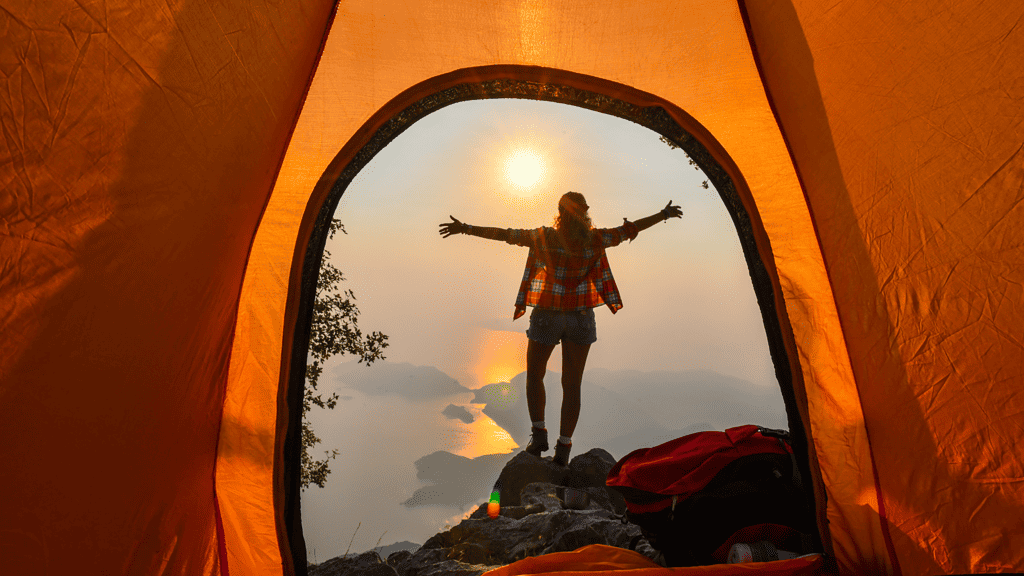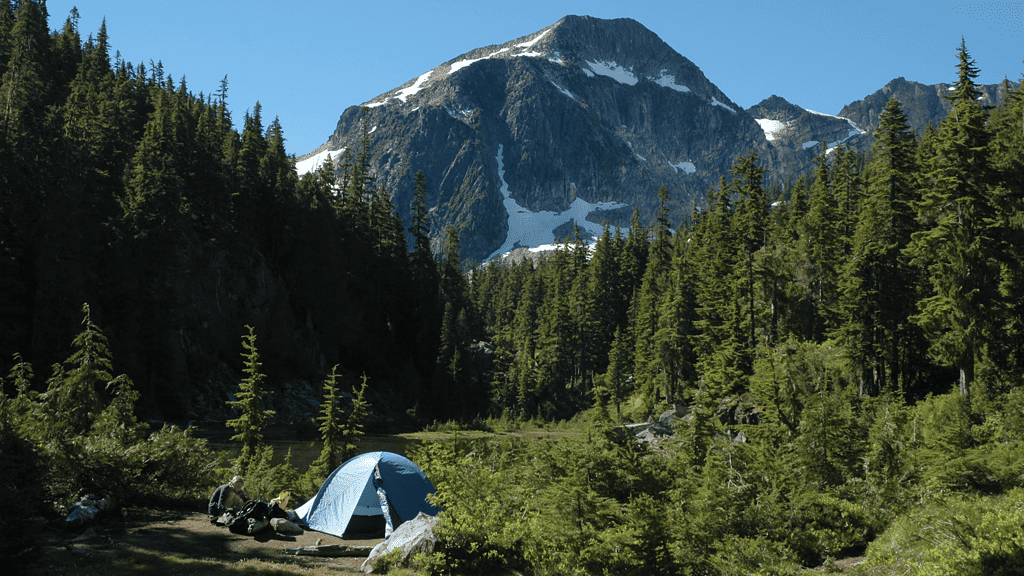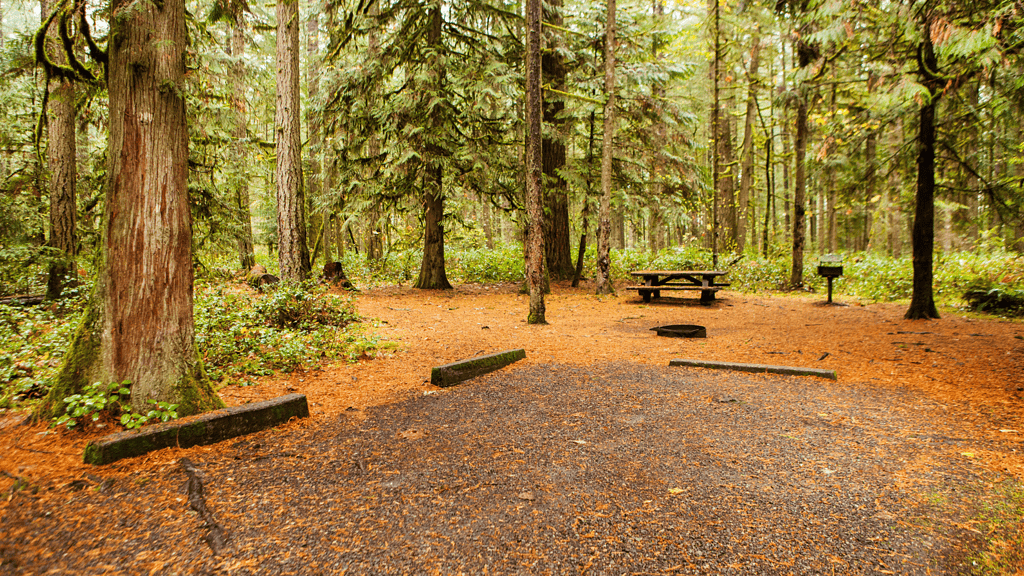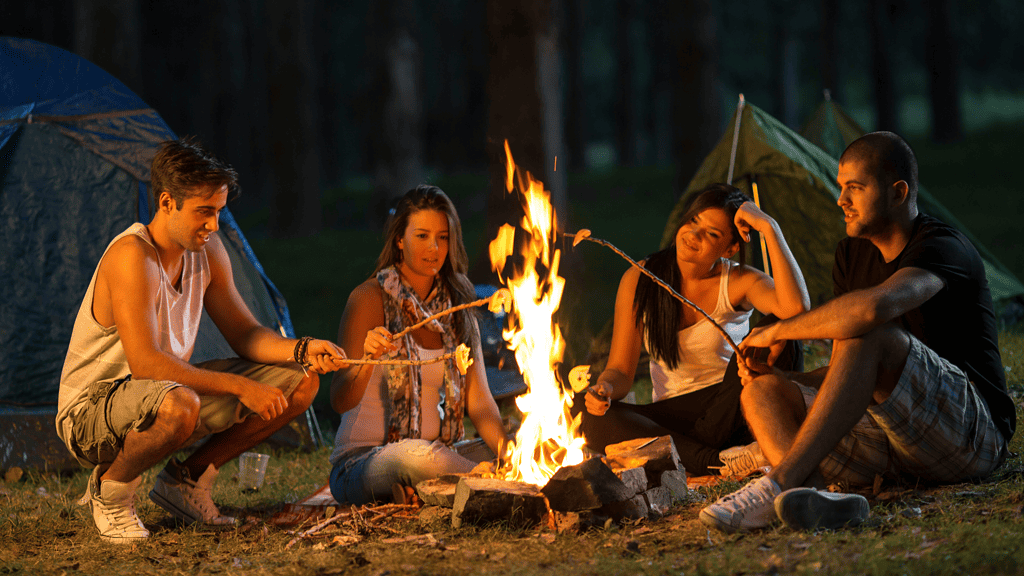
Are you ready for an unforgettable adventure in the great outdoors? Picture yourself surrounded by breathtaking landscapes, breathing in the fresh air, and falling asleep under a canopy of stars. But wait, don’t let the fear of setting up a tent hold you back from experiencing the thrill of tent camping.
Sprinkled in between the headlines are stories of my camping experiences. You may think I am a little off, and your right. But, I have hundreds of camping stories I could tell. Of the big 3 ideas for this blog, Cruising, RVing and Camping. I have been camping FAR FAR more than the other ideas. So buckle up buttercup and enjoy the article!
What is Tent Camping?
Introducing our comprehensive tent camping guide – your ultimate companion to conquering the wilderness like a pro. Whether you’re a seasoned camper or a beginner, our step-by-step process will empower you to set up your tent effortlessly and confidently.
Imagine arriving at your campsite, feeling excited and eager to begin your outdoor escapade. With our guide in hand, you’ll have the knowledge and expertise to tackle any terrain and weather conditions. No more wasting precious time struggling with tent poles and tangled ropes. We’ve got you covered from start to finish.
Plus I have thrown in a few camping mishaps to help you learn from my mistakes. Of course they could leave you scratching your head and ask what did this idiot think would happen!
Preparation is Key
Before embarking on your camping adventure, it’s crucial to prepare yourself and familiarize yourself with the tent setup process. Don’t wait until you’re at the campsite to figure it out!
Here are some essential steps to follow:
Step 1: Research and Practice
Do your research on the type of tent you have or plan to purchase. Each tent has its own setup instructions and specifications. Take the time to read the manual and familiarize yourself with the process. Additionally, practice setting up your tent in your backyard or living room before your camping trip. This will help you understand the steps involved and ensure you have all the necessary equipment.
Don’t wait till you get to the campsite and its close to dark on a stormy night, before you setup the tent. Don’t ask my how I know about this! 🙂
Step 2: Make a Checklist
Create a checklist of all the equipment you’ll need for your camping trip. This includes not only the tent but also essentials like sleeping bags, camping chairs, flashlights, a mallet for tent stakes, a water jug, and a first aid kit. Refer to the manufacturer’s instructions to see if any additional parts are included with your tent.
Just like the American Express credit card slogan says, I don’t leave home without it, a first aid kit, that is.
Many moons ago, I was on a camping trip with some buddies in my college years. A friend of mine was trying to open a can of beans for lunch. He didn’t have a can opener, but he did have a large hunting knife. Do you see where I am going with this?
He opened the can and half his hand. If you are wondering, yes alcohol was involved. Luckily I had a first aid kit in my pack. They patched my friend up and continued camping for a few more days. I couldn’t help him out, yes I had the first aid kit, but I also have a weak stomach when it comes to blood. I affectionately call myself a blood weenie. I will pass out when blood is around, especially my own. A few days later my friend decided it was a good idea to go to the doctor and have them check it out.
Step 3: Check for Damage or Missing Parts
Inspect your tent and equipment for any damage or missing parts. It’s better to identify and replace any damaged parts before your trip rather than realizing it when you’re already at the campsite. This will ensure a smooth setup process and prevent any last-minute surprises.
Choosing the Right Tent
Choosing the right tent is essential for a comfortable and enjoyable camping experience. Here are some factors to consider when selecting a tent:
Size and Capacity
Consider how many people will be sleeping in the tent. Tents are typically labeled with their capacity, indicating the number of people it can accommodate. Keep in mind that it’s always a good idea to choose a tent with a higher capacity than the number of people or animals (dogs) in your group to allow for extra space and gear storage.
Time for another campfire story, gather around kids!
I once went camping, well actually we were going to canoe a local river and camp for the night afterwards. The canoe trip took a little longer than normal, because a friends girlfriend wanted to stop every time she saw a turtle and try to catch. It never happened. Turtles are too smart and they hauled ass before she ever got close.
Because of that snafu, we didn’t get back to the campsite until late. Yes, it was another time I had to setup camp late. I had a one person tent, but that night 2 people were supposed to sleep in it. After canoeing all day, we hastily setup the tent and crashed.
What I failed to mention is…the only campsites left open were smack dab in front of the camp bathrooms. Oh and it was the 4th of July holiday weekend. So there was a lot of drinking going on everywhere. To make a long story short, we slept there one night. The next day we got up, packed our crap up and went home, sleeping next to a camp bathroom should become the next horror movie for M. Night Shyamalan!
Seasonality and Weather Resistance
Different tents are designed for different weather conditions. Determine the seasons and weather conditions you’ll be camping in to choose a tent that offers the appropriate level of protection. Three-season tents are suitable for spring, summer, and fall camping, while four-season tents are more robust and can withstand harsh winter conditions.
Yes I have another story, but will spare you this time!
Tent Style and Design
There are various tent styles to choose from, including dome tents, cabin tents, tunnel tents, and more. Consider factors such as headroom, ease of setup, and the number of doors and windows when selecting a tent style. Additionally, pay attention to the tent’s ventilation system to ensure proper airflow and reduce condensation.
Did you know there are tents now days with AC ports installed? Apparently you can hook up an AC unit and sleep like an Eskimo if you want. What happened to the good ole days of sleeping in a tent in sweltering heat, swatting every mosquito that buzzed your ears!
Gathering Essential Equipment
To ensure a smooth and hassle-free tent setup, gather all the essential equipment before heading to the campsite. Here’s a checklist of items you’ll need:
- Tent (with poles, rainfly, and stakes)
- Sleeping bags
- Camping chairs
- Flashlights or headlamps
- Mallet or hammer for tent stakes
- Water jug or water bottles
- First aid kit
- Camping stove and cookware
- Food and cooking supplies
- Camping table and utensils
- Garbage bags for waste disposal
- Extra blankets or sleeping pads
- Insect repellent and sunscreen
- Clothesline and clothespins for drying clothes
- Camping lantern or portable light source and fire starter
- And a partridge in a Pear Tree
Make sure to pack all the necessary equipment in waterproof bags or containers to protect them from rain or other weather conditions.
Finding the Perfect Campsite

Finding the ideal campsite is essential for a comfortable and enjoyable camping experience. Consider the following factors when choosing a campsite:
Location and Accessibility
Look for a campground that is easily accessible and not too far from your vehicle. This will make it easier to transport your camping gear and supplies to the campsite. Additionally, consider the proximity of the campsite to amenities such as restrooms, water sources, and hiking trails.
Terrain and Level Ground
Choose a campsite with level ground to ensure a comfortable night’s sleep. Avoid areas with rocks, tree roots, or uneven terrain that could make it challenging to set up your tent. Clear away any debris or sharp objects from the campsite to prevent damage to your tent.
Natural Features and Privacy
Take advantage of the natural features of the campsite, such as trees or shrubs, to provide shade and privacy. A secluded campsite will also offer a more peaceful and serene camping experience, away from the noise and crowds of other campers.
I have a story I could add here, but I will leave it for another time. Maybe I’ll write a blog post of all the camping stories of my past!
Environmental Considerations
Respect the environment and adhere to any camping regulations or restrictions in the area. Leave no trace by properly disposing of waste, minimizing campfire impact, and respecting wildlife. Follow the principles of “pack it in, pack it out” to leave the campsite as pristine as you found it.
Clearing and Preparing the Site

Once you’ve found the perfect campsite, it’s time to clear and prepare the area for setting up your new tent. Follow these steps:
Clear Away Debris
Before setting up your tent, clear away any debris such as sticks, rocks, leaves, or trash from the campsite. This will provide a clean and comfortable surface for your tent and help prevent any damage or discomfort during your stay.
Level the Ground
If the ground is uneven, use a shovel or your feet to level the area where you plan to pitch your tent. This will ensure a stable and comfortable sleeping surface and prevent any discomfort during the night.
Check for Hazards
Inspect the campsite for any potential hazards such as ant hills, poison ivy, or fallen branches. Avoid pitching your tent near these hazards to ensure a safe and enjoyable camping experience.
Set Up a Tarp or Groundsheet
Consider using a tarp or groundsheet underneath your tent to provide an extra layer of protection against moisture and prevent wear and tear on the tent floor. Make sure the tarp or groundsheet is slightly smaller than the footprint of your tent to prevent water from pooling underneath.
Setting Up Your Tent

Now that you’ve prepared the campsite, it’s time to set up your tent. Follow these step-by-step instructions:
Step 1: Lay Out the Tent
Unfold the tent and lay it flat on the ground, making sure the door is facing the desired direction. Smooth out any wrinkles or creases in the tent fabric to ensure a proper setup.
Step 2: Assemble the Poles
Insert the tent poles into their corresponding sleeves or grommets. Follow the manufacturer’s instructions on how to assemble the poles. Once the poles are connected, gently flex them until they form an arch shape.
Step 3: Raise the Tent
With the poles in place, slowly raise the tent by lifting the center of the arch. As the tent starts to take shape, make sure the poles are securely inserted into the grommets or sleeves. Work your way around the tent, securing each pole in place.
Step 4: Attach the Rainfly
If your tent has a rainfly, now is the time to attach it. The rainfly provides additional protection against rain and wind. Place the rainfly over the tent, aligning the doors and windows. Secure the rainfly to the tent using the provided clips or straps.
Rainfly’s are a great cover for tents. But, they obstruct your view, when the top of the tent is see through. Just make sure the night you want to watch the stars with the rainfly off, is not a night when storms are blowing through. Whew that was an interesting night!
Step 5: Stabilize the Tent
To stabilize the tent, insert stakes through the loops or rings at the corners of the tent. Hammer the stakes into the ground at a 45-degree angle, ensuring they are secure. Use a mallet or the back of your camping axe to drive the stakes into the ground.
Securing Your Tent
To ensure your tent stays in place and withstands various weather conditions, secure it properly. Follow these steps:
Step 1: Use Guy Lines
Many tents come with guy lines, which are ropes attached to the tent’s rainfly or body. Attach the guy lines to the designated loops or hooks on the tent and stake them into the ground. This will provide additional stability and prevent the tent from swaying in strong winds.
Step 2: Adjust the Tension
Make sure the guy lines are not too loose or too tight. Adjust the tension of the guy lines to provide optimal stability without putting excessive strain on the tent fabric or poles. This will help the tent withstand windy conditions and prevent damage.
Step 3: Consider Wind Direction
Position your tent so that the door is not facing directly into the wind. This will prevent strong gusts of wind from blowing into the tent, making it more comfortable and reducing the risk of damage.
Adding the Final Touches
With your tent set up and secured, it’s time to add some final touches to make your camping experience even more enjoyable. Here are a few suggestions:
Create a Cozy Sleeping Area
Arrange your sleeping bags, blankets, and pillows inside the tent to create a comfortable and inviting sleeping area. Consider using sleeping pads or air mattresses for added cushioning and insulation.
Organize Your Gear
Designate specific areas within the tent for storing your gear and personal belongings. Use storage pockets or hanging organizers to keep things tidy and easily accessible. This will help maximize the space inside the tent and keep your camping essentials within reach.
Set Up a Campfire

If campfires are allowed at your campsite, take the time to set up a safe and cozy campfire area. Clear away any flammable materials, and follow local fire regulations. Gather firewood, start the fire, and enjoy the warmth and ambiance of a crackling campfire.
Enjoy the Outdoors
Take advantage of the beautiful surroundings and explore the outdoors. Go for a hike, have a picnic, or simply relax and soak in the natural beauty around you. Camping is all about immersing yourself in nature and creating lasting memories.
Tips for a Memorable Camping Experience
To make the most of your tent camping adventure, here are some additional tips:
Pack Efficiently
Optimize your packing by organizing your gear into separate bags or containers. Label each bag to easily locate items and save time when setting up and packing up your campsite.
Dress Appropriately
Check the weather forecast before your camping trip and pack appropriate clothing layers. Dress in layers to adjust to changing temperatures throughout the day and night. Don’t forget to pack rain gear in case of unexpected showers.
Stay Hydrated and Nourished
Bring plenty of water and snacks to stay hydrated and energized during your camping trip. Consider packing lightweight and easy-to-prepare meals to minimize cooking time and effort.
Embrace Nature’s Rhythm
Disconnect from technology and embrace nature’s rhythm. Take the opportunity to unwind, relax, and enjoy the simple pleasures of the outdoors. Listen to the sounds of birds chirping, feel the gentle breeze on your skin, and marvel at the starry night sky.
Wrapping Up and My Experience With Camping
Throughout the years I have camped a lot and will continue to do so until I hit the lottery and win enough to buy a dream camper. These days most of the Campers/Travel Trailers I want cost an arm and a leg. So tent camping it is for me.
I have many fond stories of camping I can share. I have shared a few throughout this article. Some may think, I am a little off and forgetful, you are right. But, I just enjoy life and try to see the good in everything. Yes I am rambling again, that happens. I will end with this, if you want to read more camping follies of mine. Stay tuned, a new post will come out soon with a few of my greatest camping stories.
Frequently Asked Questions
Q: How long does it take to set up a tent?
A: The setup time can vary depending on the tent’s size and complexity. On average, it takes 10 to 20 minutes to set up a tent.
Q: Do I need a hammer to set up a tent?
A: Yes, a mallet hammer with a rubber-covered striking end is recommended for hammering tent stakes. Using a rubber mallet reduces the risk of stake breakage.
Q: What can I use instead of tent stakes?
A: If you don’t have tent stakes, heavy rocks or logs can be used as alternatives. However, it’s best to make your own wooden tent stakes if possible.
Q: Is it necessary to practice setting up a tent before a camping trip?
A: Yes, practicing setting up your tent before your trip is highly recommended. Familiarizing yourself with the process will make the actual setup easier and help you identify any missing or damaged parts.
Q: How can I pack my tent efficiently?
A: When packing your tent, make sure it is dry to prevent mold and mildew growth. Fold it neatly and place it in a waterproof bag or container. Consider using compression sacks to minimize the space it occupies in your backpack or vehicle.
Q: Can I set up a tent by myself?
A: Yes, most tents can be set up by a single person. However, having an extra pair of hands can make the process quicker and more efficient, especially for larger tents.
Q: How do I clean and maintain my tent?
A: After each camping trip, make sure to clean and dry your tent thoroughly before storing it. Use a mild soap and water solution to clean the tent fabric, and avoid using harsh chemicals or abrasive cleaning agents. Store the tent in a cool, dry place to prevent mold and mildew growth.
Final Thoughts
Remember, tent camping is about embracing the adventure, connecting with nature, and creating cherished memories. Follow these steps, stay prepared, and enjoy the great outdoors. Happy camping!
